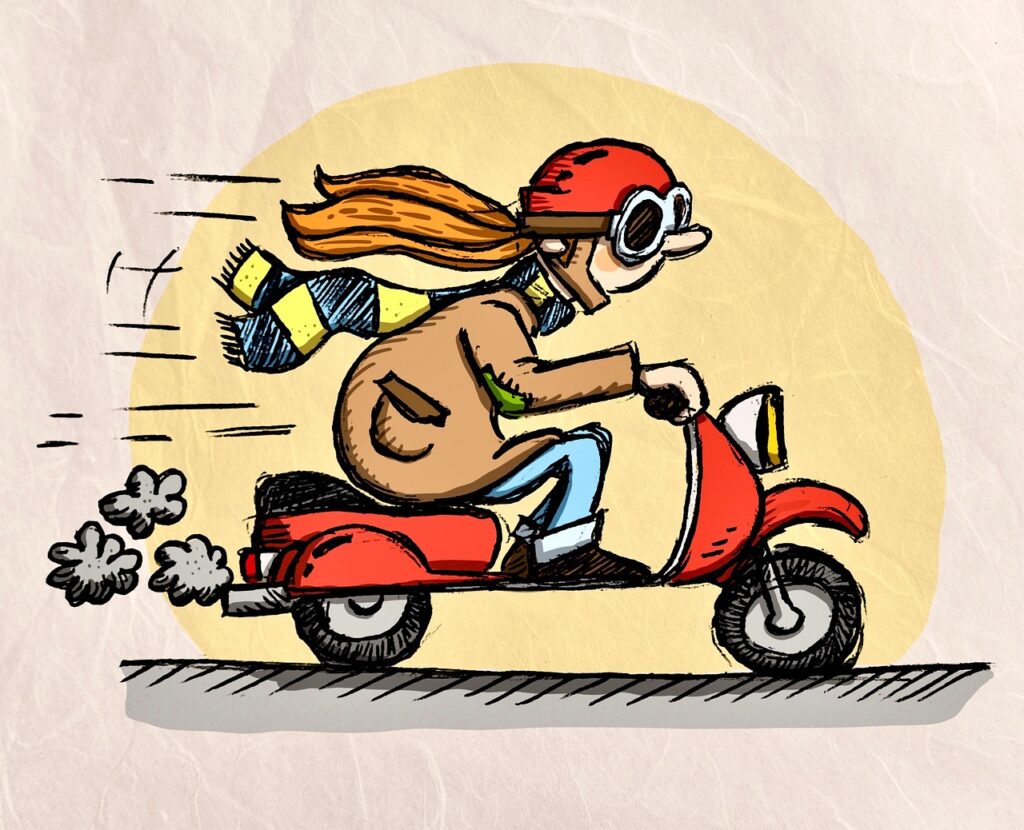
Long drives, whether for epic road trips or daily commutes that stretch into hours, present a unique challenge: the creeping onset of driver fatigue. It’s a silent, insidious hazard, often underestimated, yet statistics from agencies like the National Highway Traffic Safety Administration (NHTSA) and the U.S. Department of Transportation paint a stark picture, attributing a significant percentage of accidents, injuries, and even fatalities to drowsy driving. When your mind isn’t fully engaged, your reaction times slow, your focus blurs, and the road ahead can become a perilous place.
But here’s the good news: staying vigilant on the road isn’t just about sheer willpower; it’s about employing smart, actionable strategies that empower you to outmaneuver fatigue before it takes hold. We’re not talking about complex maneuvers or expensive gadgets, but rather simple, habit-forming adjustments that can make all the difference between a safe, enjoyable journey and a potentially dangerous one. Think of these as your personal lifehacks for conquering the open road.
From preparing your body and mind before you even turn the key, to implementing on-the-go tactics that sustain your alertness, these pro tricks are designed to keep you sharp, focused, and ready for whatever the journey throws your way. Let’s dive into the first half of our essential guide, arming you with the knowledge to transform long stretches of driving into confident, controlled experiences. By understanding and applying these habits, you’re not just preventing accidents; you’re elevating your entire driving game.

1. **Prioritize Quality Sleep for Peak Performance**Before you even think about embarking on a long drive, the single most critical preparation you can make is ensuring you’ve banked enough quality sleep. Adequate rest isn’t just a suggestion; it’s a non-negotiable requirement for optimal cognitive function, sharp reflexes, and sustained concentration on the road. The experts agree: adults typically require 7-9 hours of sleep per night to genuinely rejuvenate the mind and body.
Skipping out on this vital rest is, as the National Sleep Foundation warns, a recipe for disaster. When your brain is well-rested, it processes information faster, reacts more effectively to sudden changes, and maintains a higher level of sustained attention. This foundational step drastically reduces your susceptibility to fatigue-related errors, keeping you proactive rather than reactive behind the wheel.
To really nail this, aim for a consistent sleep schedule in the days leading up to your trip. Create a truly restful environment: dim the lights, minimize noise, and avoid screen time before bed. If a full night’s sleep isn’t feasible, a short power nap of 20-30 minutes can offer a quick recharge, though it’s never a substitute for deep, restorative sleep. Equipping yourself with enough rest beforehand means you’re starting your journey from a position of strength, not exhaustion.
Read more about: Devon Walker’s Candid Departure Illuminates Complexities of Saturday Night Live’s Environment
2. **The Power of Strategic Breaks to Recharge Mind and Body**Driving for extended periods without interruption can quickly lead to both physical and mental exhaustion, dulling your senses and increasing the risk of inattentiveness. This isn’t about pushing through; it’s about intelligently breaking up your journey to maintain peak performance. A crucial strategy for staying alert is to commit to regular, scheduled breaks, turning long monotonous stretches into manageable segments.
Experts widely recommend pulling over every two hours or after covering 100 miles, whichever comes first. These brief intervals aren’t just for quick pit stops; they’re opportunities to actively refresh your entire system. Step out of the vehicle, stretch your legs, take a short walk, and breathe in some fresh air. This physical activity helps to reduce muscle tension, improve circulation, and most importantly, restore mental focus.
Seek out designated rest areas, state-sponsored facilities, or even local parks that provide a safe and comfortable environment for your pause. These short respites interrupt the monotony of driving, breaking the hypnotic trance that can set in on long, straight roads. By adhering to these scheduled pauses, you’re giving your body and mind the necessary micro-recharges to stay sharp and engaged, making the entire journey safer and more enjoyable.

3. **Hydration Hacks for Sustained Alertness**Dehydration is a sneaky culprit when it comes to driver fatigue, often going unnoticed until its effects on concentration and reaction times become undeniable. Just as your body needs fuel, your brain needs water to operate efficiently, ensuring cognitive and physical functions are performing at their best. Staying properly hydrated is a simple yet incredibly effective way to keep your energy levels up and your mind clear.
Make it a habit to keep a large water bottle within easy reach and sip from it frequently throughout your drive. Don’t wait until you feel thirsty, as thirst is already a sign that dehydration has begun to set in. Regular, small sips will help maintain consistent hydration levels, promoting overall alertness and warding off that sluggish feeling that often precedes full-blown fatigue.
Beyond just drinking water, be mindful of what you’re consuming. While a quick coffee might seem like a solution, excessive caffeine or alcohol can act as diuretics, paradoxically contributing to dehydration and leading to energy crashes later on. Focus on pure water as your primary hydration source to ensure sustained attentiveness and better decision-making capabilities, keeping your brain responsive to every change in your surroundings.

4. **Fueling Your Journey: Smart Snack and Meal Choices**The food you consume before and during your drive plays a significant role in your energy levels and susceptibility to fatigue. Heavy meals, particularly those rich in carbohydrates and sugars, demand a lot of energy for digestion, which can divert resources from your brain and induce a post-meal slump or sleepiness. The key is to opt for lighter, more sustained energy sources that keep you alert without causing a crash.
Before hitting the road, choose balanced meals featuring lean proteins, healthy fats, and complex carbohydrates in moderate portions. Think along the lines of a chicken salad, whole-grain wrap, or a light vegetable omelet. These options provide a steady release of energy without overwhelming your digestive system, allowing your focus to remain on the road ahead rather than on a food coma.
For on-the-go sustenance, pack healthy snacks that are easy to access and don’t require much attention to eat. Fruits like apples or bananas, a handful of nuts, hard-boiled eggs, or even granola bars can provide a much-needed boost. These intelligent choices help maintain stable blood sugar levels, preventing the energy dips that can lead to drowsiness. Preparing your own snacks also offers a practical way to avoid expensive and often less healthy options found at gas stations, keeping both your wallet and your wakefulness in check.

5. **Mastering Caffeine: Boost Without the Crash**Caffeine can be a double-edged sword when it comes to combating driver fatigue. Used strategically, a moderate amount can provide a temporary lift in alertness, effectively perking you up during those inevitable mid-afternoon slumps. However, over-reliance or excessive consumption can lead to agitation, jitters, and ultimately, a more severe energy crash than the fatigue you were trying to avoid in the first place.
The trick is moderation and timing. A single cup of coffee or tea can be helpful, offering a quick boost to help you maintain wakefulness. The National Sleep Foundation cautions against over-reliance, emphasizing that caffeine is no substitute for actual rest. It’s a temporary measure, best paired with a break or a short nap for a more lasting effect. Avoid consuming caffeine late in the day, as it can disrupt your sleep patterns and sabotage your readiness for the next day’s driving.
Furthermore, steer clear of energy drinks. While they promise intense boosts, their high sugar and caffeine content often lead to significant energy crashes that will leave you in a worse state than before. Focus on natural, less processed forms of caffeine, and always balance your intake with plenty of water and healthy snacks. This balanced approach supports sustained attentiveness without the adverse effects, empowering you to manage your energy levels effectively throughout your journey.

6. **Optimizing Your Cabin Environment for Vigilance**Your vehicle’s internal environment plays a surprisingly significant role in your alertness levels. A stuffy, warm, or monotonous cabin can quickly lull you into a state of lethargy, making fatigue set in more rapidly. Creating an invigorating and comfortable atmosphere within your car is a simple yet powerful hack to keep your senses sharp and your mind engaged.
One of the easiest ways to achieve this is by ensuring proper ventilation. Periodically opening your windows, even for a few minutes, helps to circulate fresh air and expel stale, warm air that can induce sleepiness. Utilize your vehicle’s air conditioning system to maintain a cooler temperature than you might typically prefer. Experts suggest setting the temperature a few degrees lower, creating a subtle chill that acts as a natural stimulant, keeping you frosty and focused.
Adjusting air vents to direct a gentle flow of cooler air towards your face can further assist in invigorating your senses. This constant, subtle stimulation helps to prevent the warmth-induced fatigue that often leads to wandering thoughts and heavy eyelids. By proactively managing your cabin’s temperature and airflow, you’re actively working against the environmental factors that promote drowsiness, ensuring your focus remains firmly on the road ahead.

7. **The Buddy System: Sharing the Wheel and the Load**One of the most effective strategies for mitigating fatigue on long journeys is also one of the simplest: don’t go it alone if you don’t have to. Traveling with a passenger, especially another experienced and trustworthy driver, can transform a grueling solo trek into a far more manageable and enjoyable experience. The ‘buddy system’ isn’t just about company; it’s a vital safety mechanism that distributes the inherent strain of prolonged driving.
Having another person in the car provides multiple benefits. Firstly, they can engage you in conversation, helping to keep your mind stimulated and active, breaking the monotony that often leads to drowsiness. This mental engagement, whether through casual chat or even fun road trip games, prevents your thoughts from wandering and keeps you anchored to the present moment and the task of driving.
Secondly, and perhaps most importantly, a co-driver allows for the invaluable opportunity to take turns behind the wheel. Each driver can assume responsibility for a few hours at a time, providing much-needed rest periods for the other without significant delays. This ensures that someone is always relatively fresh and fully focused on the road, dramatically reducing the cumulative fatigue that builds up over extended journeys. Distributing these driving responsibilities is a smart, proactive approach to maintaining vigilance and overall safety throughout the entirety of your trip.” , “_words_section1”: “1945
As we continue our journey into mastering the art of staying alert on the open road, we shift our focus to even more advanced techniques. These aren’t just about reacting to fatigue, but proactively engaging your mind and body, optimizing your environment, and making smarter choices before and during your trip. By integrating these additional strategies, you’ll build an impenetrable defense against drowsiness, ensuring every mile is driven with confidence and unwavering focus.

8. **Mental Engagement: Keep Your Mind Active and Alert**Monotony is a silent killer of alertness on long drives. When the scenery becomes a blur and the road stretches endlessly, your mind can easily wander, slipping into a state of hypnotic trance that paves the way for fatigue. Combatting this requires active mental stimulation, transforming your cabin into an engaging, dynamic space that keeps your brain firing on all cylinders.
One incredibly effective strategy is to engage in stimulating conversations if you have passengers. The back-and-forth of a good chat, whether it’s discussing the day’s events or playing fun road trip games, forces your brain to process information and respond, preventing it from zoning out. This social interaction anchors your thoughts to the present moment, making you more aware of your surroundings and the driving task at hand.
If you’re traveling solo, your audio choices become paramount. While your favorite music can provide a temporary pick-me-up, many experts recommend tuning into talk radio, podcasts, or audiobooks for sustained mental engagement. The continuous narrative or discussion demands more active listening than music, keeping your cognitive faculties involved and preventing the subtle lulling effect that repetitive tunes can sometimes have. Think of it as a mental workout that keeps you sharper for longer.
Creating a playlist of upbeat, energetic songs, particularly those that encourage sing-alongs, can also be a powerful tool. The key is to avoid overly calming or repetitive melodies that might inadvertently induce sleepiness. Lively, varied audio content helps to invigorate your senses, elevate your mood, and disrupt the quiet drone of the highway, making sure your focus remains sharp and your spirits high.

9. **Recognize and Respond to Fatigue’s Warning Signs**The most crucial step in preventing drowsy driving accidents is recognizing the insidious signs of fatigue before they escalate into dangerous territory. Your body often sends subtle, yet clear, signals that it’s nearing its limit, and learning to interpret these warnings is a life-saving skill. Ignoring them is akin to driving with a check engine light on – you’re risking a breakdown.
Common indicators include persistent yawning, heavy or drooping eyelids, and a noticeable difficulty in concentrating on the road. You might find your thoughts wandering, experiencing “memory lapses” or “zoning out” for brief periods. Physical cues can range from burning eyes or difficulty keeping them fixed, to muscle twitches or spasms, or even feeling restless and irritable. These are not minor annoyances; they are urgent calls for a break.
More advanced, and frankly, more alarming, signs manifest in your driving behavior. These include drifting across lanes or onto the shoulder, inconsistent speed, tailgating, or even missing traffic signs or turns. The Federal Motor Carrier Safety Administration (FMCSA) and the Center for Disease Control (CDC) highlight that recognizing these early signals and acting quickly can make all the difference, preventing an inattentive moment from becoming a tragic event.
If you observe any of these symptoms in yourself, it’s imperative to take immediate action. Don’t try to push through, assuming you can conquer the sleepiness with sheer willpower. That’s a perilous gamble. Pull over safely at the earliest opportunity – a rest area, a gas station, or a designated pit stop – and address the fatigue directly. Acknowledging these signals promptly is a proactive measure against potential mishaps.

10. **The Strategic Power Nap: Your Quick Recharge Button**Sometimes, despite all preventative measures, fatigue can become undeniable. When those tell-tale signs begin to surface, one of the most effective countermeasures, as recommended by AAA, is a strategic power nap. This isn’t about falling into deep sleep for hours; it’s about a short, targeted rest that provides a significant boost to your alertness and cognitive function.
A power nap lasting approximately 20-30 minutes can dramatically rejuvenate your alertness and performance, combating what’s known as “sleep pressure.” The goal is to catch just enough light sleep to refresh your brain without entering the deeper stages of sleep that can lead to post-nap grogginess, often referred to as “sleep inertia.” Setting an alarm is crucial to ensure you don’t oversleep.
For a power nap to be truly beneficial, the environment is key. Pull over to a safe, quiet location away from traffic and distractions. Designated rest areas are ideal. If you’re napping in your car, always remember to lock your doors for safety and security. Reclining your seat comfortably, even slightly, can aid in relaxation and make it easier to drift off for those vital minutes.
Combining a power nap with a moderate amount of caffeine can amplify its effects. A cup of coffee before your nap, for instance, can help you wake up feeling even more refreshed, as the caffeine takes effect just as you’re stirring. This combination offers a potent one-two punch against fatigue, ensuring you return to the road with renewed focus and the capacity for better decision-making.

11. **Optimize Your Driving Posture and Position**While often overlooked, your physical posture and seating position behind the wheel play a significant role in preventing fatigue and maintaining alertness. Slouching or an uncomfortable setup can lead to muscle strain, reduced circulation, and ultimately, accelerated exhaustion, turning a long drive into a physical ordeal rather than an enjoyable journey. Ergonomic adjustments are not just about comfort; they’re about sustained vigilance.
Start by adjusting your seat to ensure good posture. Sit upright with your back straight against the seatback, maintaining a slight curve in your lower back. Your legs should be comfortably positioned, ideally at a 45-degree angle to the pedals, allowing you to operate them without stretching or straining. Hands should rest comfortably at the 9 and 3 o’clock positions on the steering wheel, providing optimal control and reducing tension in your shoulders and arms.
Most vehicles offer a range of adjustments for the seat, mirrors, and steering wheel. Take full advantage of these. Raising the bottom of the seat, leaning the back of the chair forward or back more than usual, or sliding the seat to a new position can alter your physical sensation and take you out of that “comfort zone” that can induce sleepiness. This subtle shift helps keep your body and mind more attuned to the driving task.
By actively changing your seat position periodically, even just slightly, you can stimulate different muscle groups and disrupt the monotony of a fixed posture. This small act can prevent the physical stiffness and discomfort that contribute to fatigue, keeping your body engaged and your blood flowing. A conscious effort to maintain good, varied posture throughout your drive is a simple yet powerful hack to boost attentiveness and control.
Read more about: The Commuter’s Zen Garden: 8 Life-Changing Ways to Transform Your Car into a Stress-Free Sanctuary
12. **Strategic Timing: Avoid Peak Fatigue Hours**One of the smartest “pro tricks” for combating driver fatigue involves strategic trip planning around your body’s natural rhythms. Our internal clock, or circadian rhythm, dictates periods of peak alertness and inherent drowsiness. Driving during these naturally sleepy windows can drastically increase your susceptibility to fatigue, even if you’ve had adequate rest.
Experts, including those cited by the Traffic Safety Store, strongly advise against driving during your body’s drowsiest hours. These typically fall between midnight and 6 a.m., and then again in the early to mid-afternoon, usually from 2 p.m. to 4 p.m. During these times, our bodies are naturally programmed for rest, and pushing through can be particularly challenging and dangerous. Starting your journey early in the morning, for instance, allows you to cover significant ground during daylight hours, which are inherently safer and less tiring.
If possible, plan your driving hours to avoid driving late at night altogether. Fatigue tends to set in more quickly during nighttime hours due to reduced visibility and the body’s natural inclination towards sleep. By aligning your travel schedule with your natural wakefulness, you are working with your biology, not against it, giving yourself the best chance to remain alert and focused.
This proactive approach to timing your drive minimizes exposure to periods when fatigue is most likely to strike. It’s not just about getting enough sleep before you start, but also about choosing when you actually put pedal to metal. A well-timed departure can make a profound difference in the safety and enjoyment of your entire journey, ensuring you stay “frosty and focused” when it matters most.

13. **Cruise Control: Use It Wisely, Not Continuously**Cruise control is a convenient feature for maintaining a consistent speed on long stretches of highway, and it can certainly reduce the physical strain of constantly adjusting the gas pedal. However, when it comes to combating fatigue, its use requires a nuanced approach. Relying on it too heavily, especially when signs of drowsiness begin to emerge, can paradoxically accelerate the onset of fatigue.
The very act of operating the pedals—applying subtle pressure to the accelerator, modulating speed, and being ready to brake—provides a continuous, albeit low-level, physical and mental engagement. When cruise control takes over, this engagement diminishes. Your feet are no longer actively involved in controlling speed, and this reduction in physical activity can contribute to a more rapid onset of mental disengagement and sleepiness.
While cruise control can be beneficial for maintaining speed limits and reducing fatigue on very long, clear stretches of highway, it’s crucial not to rely on it in heavy traffic, changing road conditions, or, most importantly, when you are feeling tired. The activity of using your feet, even if it feels minor, helps keep drivers awake and attentive. The advice from the context suggests that for avoiding fatigue, it’s best not to use it at all, particularly if you’re already feeling the drag.
Therefore, integrate cruise control into your driving only when you are completely alert and the conditions are optimal. If you notice yourself becoming drowsy, disengage it. The slight mental and physical effort required to control your speed manually can act as a subtle stimulant, helping to keep your mind anchored to the task of driving and warding off the hypnotic effect of uninterrupted motion.
14. **Prioritize Safety: Know Your Limits and Plan Overnight Rests**Ultimately, the most critical “pro trick” for safe long-distance driving is to listen to your body and prioritize safety above all else. No deadline, no rush, and no desire to “power through” is worth the risk of a fatigue-related accident. Being honest about your energy levels and knowing when to call it a day, or even several days, is the hallmark of a responsible and smart driver.
Pay constant attention to how you’re feeling. If you start to feel drowsy, irritable, or simply less sharp than you should be, that’s your body giving you an undeniable signal. Take a break immediately. Pull over at a safe location—a welcome center, a rest stop, or a hotel—and give yourself the necessary time to fully recover, whether it’s a short nap or a complete overnight rest.
For particularly long trips, especially those spanning multiple states or covering vast distances, one of the most effective strategies is to break the journey into sections over several days. While it might add to the cost of accommodation, finding a place to stay overnight can significantly reduce stress and fatigue. This allows you to wake up refreshed, ready to enjoy the next leg of your adventure rather than simply endure it.
Remember, the goal isn’t just to reach your destination, but to arrive there safely and enjoyably. Road trips offer unique opportunities for exploration and creating memories, and embracing a flexible itinerary that allows for proper rest enhances this experience. By knowing your limits, monitoring your energy, and being willing to rest overnight when necessary, you empower yourself to drive safely, confidently, and ultimately, to make the journey as rewarding as the destination.
The road ahead is yours to conquer, but only with the right mindset and a toolbox full of smart, actionable strategies. By applying these “pro tricks,” you’re not just preventing accidents; you’re transforming every long drive into a testament to your proactive approach to safety and your mastery of the road. Drive smart, stay alert, and embrace the adventure with confidence.






